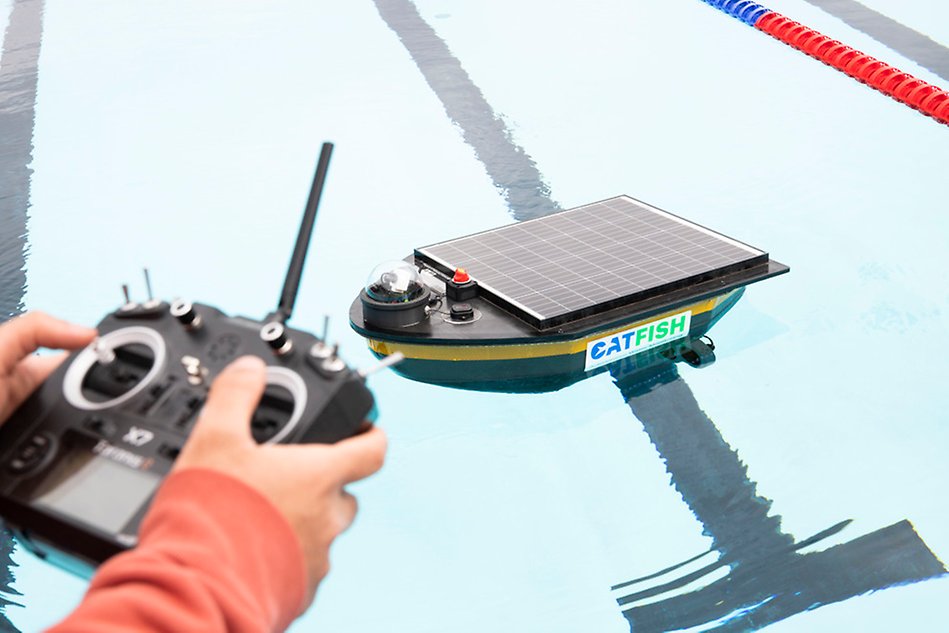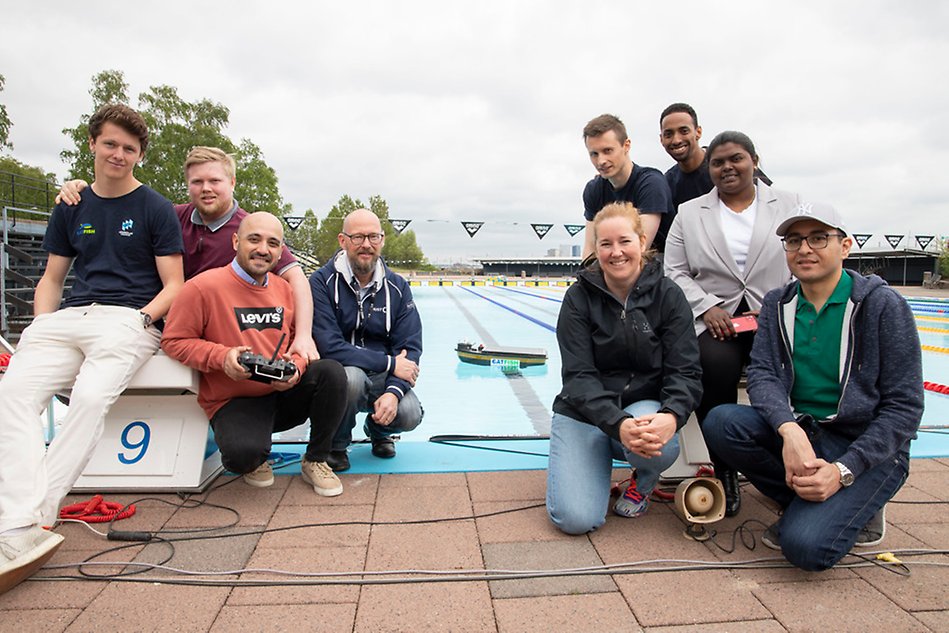Drone is going to measure the quality in the municipal bodies of water
CatFish, the solar-powered water drone which has been developed at Halmstad University, will support decision-making on actions for water conservations. The University has in collaboration with Halmstad Municipality been granted SEK one million from LOVA – local water conservation allocations – for improving and preserving the bodies of water in the municipality. A larger amount of the allocation goes to the development of the drone, in regard of materials and equipment.
"It would be wonderful if we could eat the salmon caught in Nissan River again"
Joakim Tell, Senior Lecturer in Industrial Management

The third prototype very promising
The prototype that researchers and students are working on right now is the third and has greater performance than its predecessors. Its weight of 50 kilograms is crucial since it enables handling real circumstances in bodies of water. The drone is equipped with a camera in the front that can be synced with virtual reality goggles. The new sensors, which are acclimated to different environmental problems, are self-cleaning and able to retrieve values – from 25 meters depth. To decide on the drone’s navigation for data collection, the remote control has been modernized through simple key-in of coordinates. The data collected is wirelessly stored in the cloud and can be uploaded to a specific interface to map out the values and colour code for instance pH values.
“The drone moves like a robotic lawn mower on water and collects quality data that we can read in real-time”, says Joakim Tell, Senior Lecturer in Industrial Management.
The representative from the Municipality of Halmstad in the project is Ellinor Waldemarson, sustainability strategist at the Municipal Management Administration. She works foremost with water quality cases and provides the perfect reinforcement to the group. Ellinor Waldemarson leads the project and makes sure that the CatFish project goes according to plan.
“There are many areas of application where we can use the drone’s technology, but we need to focus on finding problem areas and assess wherever the greatest beneficial effect is right now”, she explains.
The VR goggles are paired with the drone's camera, that is installed at the front.
Saves time and money – and promises higher quality
The water sampling today is done monthly by consultants, who collect water samples in a bottle, which is being sent to laboratories for analysis. That kind of water sampling method is not optimal since it is expensive, ineffective and has an error margin that is too high, according to Ellinor Waldermarson
“The entire water chemistry can change by only one brief rain shower. With that method, it can take up to 30 years to build up reliable data”, she says.
This is where the water drone CatFish comes in. It is crucial to collect water samples at the first wave of contaminations from the storm water, or acidifications from the forests both during peaks and troughs. The drone can collect data every second, any season. Additionally, it has several measuring points, for instance temperature, pH value, phosphorus and turbidity.
“The Municipality of Halmstad can save both time and money with this method”, says Ellinor Waldemarson.
Multidisciplinary and cross-programme project
CatFish started as a student project at the Master’s Programme in Industrial Management and Innovation and has rapidly grown to become a research and collaboration project which engages students, researchers and external actors today. It all started when the then Programme Director of the Master’s Programme in Industrial Management and Innovation, Joakim Tell, wanted to provide a development project in live conditions for the students.
“This is a great way to demonstrate how the University can cooperate with the municipality to solve big, complex issues as conservation and measurements. Meanwhile, the students gain experience and contacts that can lead to job opportunities”, says Joakim Tell.
Today, the project is multidisciplinary and spans over several programmes and engages students from the programmes, among other, Environment, Innovation and Sustainability, Computer Engineering, Innovation Engineering and Master of Science in Computer Science and Engineering.

The project group, consisting of researchers, students and collaborator, performed tests at Simstadion Brottet.
Will examine Nissan River’s well-being
In May this year, all project members were on site at Simstadion Brottet, which houses outdoor pools, to perform tests on the third prototype, to assess whether some functions need improvements.
CatFish will in the near future be exposed to a real-life situation by collecting samples in the Nissan River. If the outcome is according to plan, the project group will have to start to reflect upon how they best can support other municipalities in Halland. The goal is to track where the contaminations come from and remedy these to accomplish clean waters.
“It would be wonderful if we could eat the salmon caught in Nissan River again”, says Joakim Tell.
Text: Katarina Tran
Photo: Dan Bergmark
Video: Joakim Wahlberg

